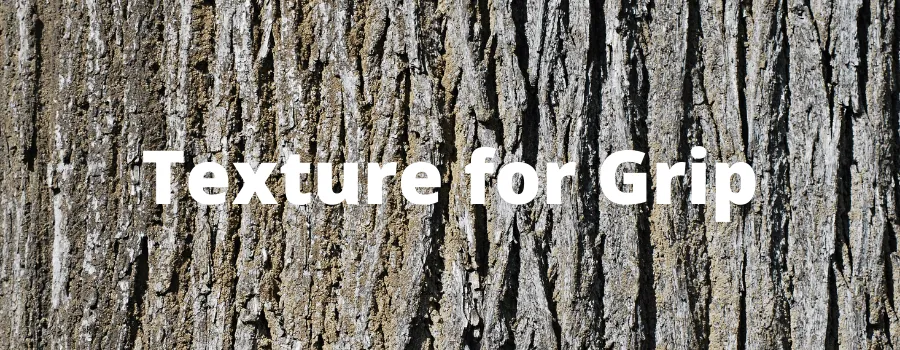If your constantly getting rain showers followed by sun, the decking you choose is critical for how safe your deck will be. Water on any surface increases the risk of slips and falls. Decking is no exception. But when deciding between wood or composite decking, how slippery they are matters.
Most composite decking is slippery compared to wood decking when wet. The polymer cap of the decking repelling the water, creating potential slipping hazards. There are some notable composite decking exceptions, that provide excellent traction both when wet and dry.
Now I know you want to know what the exceptions are. Which composite decking is not slippery when wet? You can jump ahead to the end to see but you would be better off reading of what makes the difference in traction between the decking. Then regardless if you install Azek Vintage or Fiberon Paramount PVC decking, you can know which decking is less slippery when wet. Ops, did I just give the answer already.
Vintage or Fiberon Paramount PVC decking, you can know which decking is less slippery when wet. Ops, did I just give the answer already.
Anyways, let’s discuss why composite decking is slippery when wet and which are not.
What Makes Composite Decking Slippery When Wet
Another word for traction is friction. The greater the level of friction between your shoes and the decking, the less you will slip in the rain or when you wash your deck. The more the decking grips your shoes, the better, minimizing falls when wet.
What Increases Grip on Composite Decking?
There are two ways to increase grip on decking, texture and material finish. This is one of the wonders of polymer caps. Most current composite decking has a strong polymer cap that allows for a superior looking decking finish while increasing the decking texture.
Many higher-end decking boards have an embossed “wood grain finish” on the boards, which has a dual benefit. Primarily it makes composite decking look a lot less plastically, which was an earlier complaint about composite decking. Mimicking the look of hardwoods, which we have a strange attraction to.
But concerning wet composite decking and rain, this wood texture also provides much-needed grip. The small grooves in the boards gripping your feet as you walk on the decking. The more texture, the more grip.
Making finding good decking for wet environments reasonably easy. When you are in the store, run your hands over the decking samples. If it’s smooth and your hand glides over the boards, move on. That decking will not provide good grip. If you can feel small grooves and the decking is “rough,” not like tree bark rough but still with texture, it will provide good grip even when wet.

There are many composite decking boards on the market these days. But they all vary on how slippery they are when wet. Some will exceed the standard set for wood decking or flooring of 0.5, but unfortunately, many will not. Here is a sample of a few popular composite decking boards and their traction rating, both wet and dry.
boards and their traction rating, both wet and dry.
| Slip Resistance (Dry) | Slip Resistance (Wet) | |
| Fiberon Horizon | 0.37-0.38 | 0.33-0.36 |
| MoistureShield | 0.38 | 0.33 |
| Trex | 0.43-0.52 | 0.32-0.39 |
| Azek Harvest | 0.54 | 0.43 |
| TimberTech Terrain | 0.54 | 0.43 |
| Armadillo Decking | 0.22-0.26 | 0.43-0.54 |
| Azek Vintage | 0.77 | 0.56 |
| Fiberon Paramount PVC | 0.85 | 0.82 |
Most of these ratings are from CCMC elevation reports. In the hope of providing an unbiased reference to evaluate composite decking.
“The CCMC provides code compliance assessments either as an alternative solution, which uses a proprietary CCMC-developed set of criteria to establish code compliance, or as an acceptable solution, that verifies if a product meets a code-referenced product or material standard.”
Of note, some manufacturer’s lines are grouped in the reports.
Which is unfortunate as it does not allow for the fact that some individual decking boards will perform better than others. The group pulling down individual deck boards performance rating. Especially true for composite decking brands with “budget” decking. Lines are designed for price will sometimes pull down the entire brand rating with their lower-priced board’s performance.
Trex is an excellent example of this. Trex Transcend is five times more scratch resistance than Enhance, but they are reported together. This is entirely unfair to Transcend, a durable deck board with deep wood-grain pattern providing excellent grip.
This can be said for most composite decking brands. Don’t let one lower quality boards discredit the entire brand. Look for individual composite decking boards with good texture. Providing grip on your deck even when it rains.
A hint, better texture and embossing of wood grains will often be found on higher-end boards. Most budget-sensitive composite decking will use older designs, which are more prone to be slippery. It always takes a few attempts to work out imperfections and improve on a product. Composite decking is no exception; the newer lines often performing better but will generally cost more.
How Slippery is Composite Decking Compared to Wood Decking?
CCMC standard for wood decking is 0.5 in both wet and dry conditions. Of our list of composite decking boards, most fall below this standard. Making composite decking boards as a whole more slippery when wet than wood decking.
boards, most fall below this standard. Making composite decking boards as a whole more slippery when wet than wood decking.
I want to qualify my answer a bit with a small explanation. The decking condition, both for wood and composite, will make a big difference in how slippery it is. The single largest reason for slips on a deck is not the decking itself but what is on the decking.
Mould and mildew build up on decking is a slipping hazard. The risk of slipping is compounded when wet. This is one of the advantages of composite decking over wood decking. Mould and mildew will not grow on quality composite decking. Meaning except for mud, your composite deck will provide the same amount of traction ten years from now as the day you installed it. This does not mean that your composite deck will not need to be cleaned but that it will not become slippery from mould or mildew.

Another caveat is with wood decking finishes. Painting or staining of wood decking which is required for long life of the decking will impact the level of traction the decking will provide. Meaning just because pine decking is rated above 0.5 for traction does not mean that all wood decking provides that much traction. Some stains and paint in particular, may reduce the traction provided by the wood decking.
That being said let’s get back to discussing how slippery composite decking is when wet.
When comparing our list of composite decking as a whole, composite decking is more slippery than wood decking. With a majority rating below the 0.5 ratings for traction when wet and some even failing when dry.
Two Notable Composite Deck Boards for Traction When Wet and One Anomaly
Both Azek Vintage line and Fiberon Paramount PVC decking exceed the 0.5 ratings of new wood decking traction. Technically these two decking boards are not composite but are PVC which has some distinct differences than composite decking. But in this case, it is not a what the core of the decking is made of that counts but its cap. All quality composite and PVC decking
Paramount PVC decking exceed the 0.5 ratings of new wood decking traction. Technically these two decking boards are not composite but are PVC which has some distinct differences than composite decking. But in this case, it is not a what the core of the decking is made of that counts but its cap. All quality composite and PVC decking are capped to protect the decking’s core and enhance its appearance. With these two boards, it improves the life and appearance of the decking and its traction.
are capped to protect the decking’s core and enhance its appearance. With these two boards, it improves the life and appearance of the decking and its traction.
These PVC decking boards are on the higher end of the scale in cost, but with the additional cost comes a superior cap. A cap that exceeds traction requirements both when wet and dry. If you live in an area that gets lots of rain, making your deck often wet, these boards would be worth the extra cost. Minimizing slips even when wet better than wood decking and most other composite decking options.
Armadillo Decking is an anomaly that I have looked over the data multiple times in case I was somehow misreading it. In fact, I just reread the Armadillo Performance report again, because its numbers are reversed from all the others. Water makes things slippery. That’s why I enjoy water sliding with my kids. Water typically reduces friction, but with Armadillo
Performance report again, because its numbers are reversed from all the others. Water makes things slippery. That’s why I enjoy water sliding with my kids. Water typically reduces friction, but with Armadillo decking, the boards actually have more traction when wet. Almost doubling in traction, just by adding water. I don’t know if this means you should always spray down your Armadillo deck before using, which would be great for cooling your decking down
decking, the boards actually have more traction when wet. Almost doubling in traction, just by adding water. I don’t know if this means you should always spray down your Armadillo deck before using, which would be great for cooling your decking down . But it seems to work better when wet.
. But it seems to work better when wet.
Final Note on Slipping on Wet Composite Decking
The decking that you install on your deck will make a difference in minimizing slipping. But, part of our question is also about wet decking. Decking traction is improved with the removal of water. Designing your deck for increase runoff will reduce slipping regardless of which deck boards you install.
Water naturally runs off composite decking. This is why many manufacturers only require 1/16″ (1.6mm) slope over a foot (0.3m) or less. But decks in rainy climates or beside a pool. Increasing the slope of the deck will improve runoff. The faster the water runs off, the sooner the boards will dry. The dryer the decking, the less you will slip.
will improve runoff. The faster the water runs off, the sooner the boards will dry. The dryer the decking, the less you will slip.
Source of Decking Data
